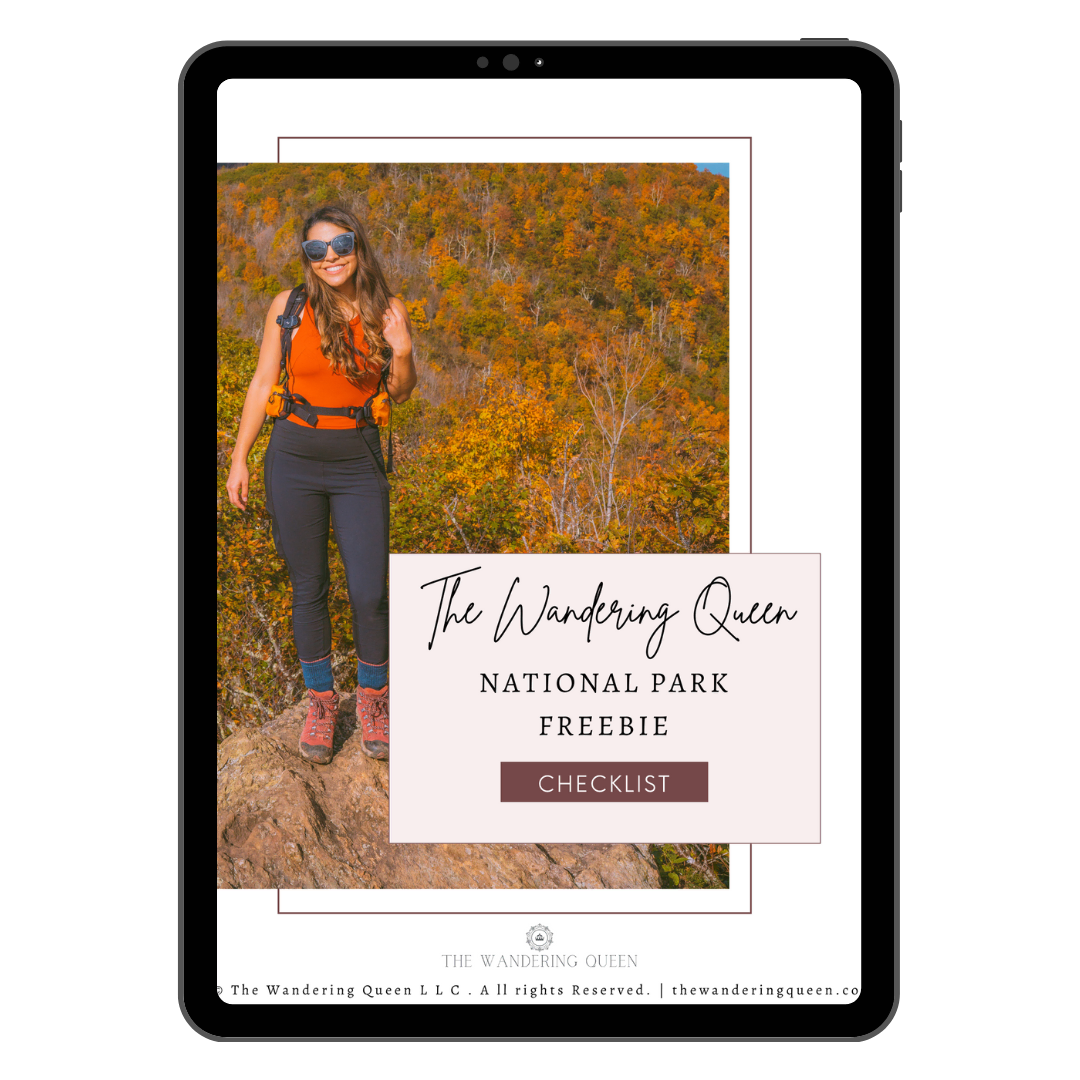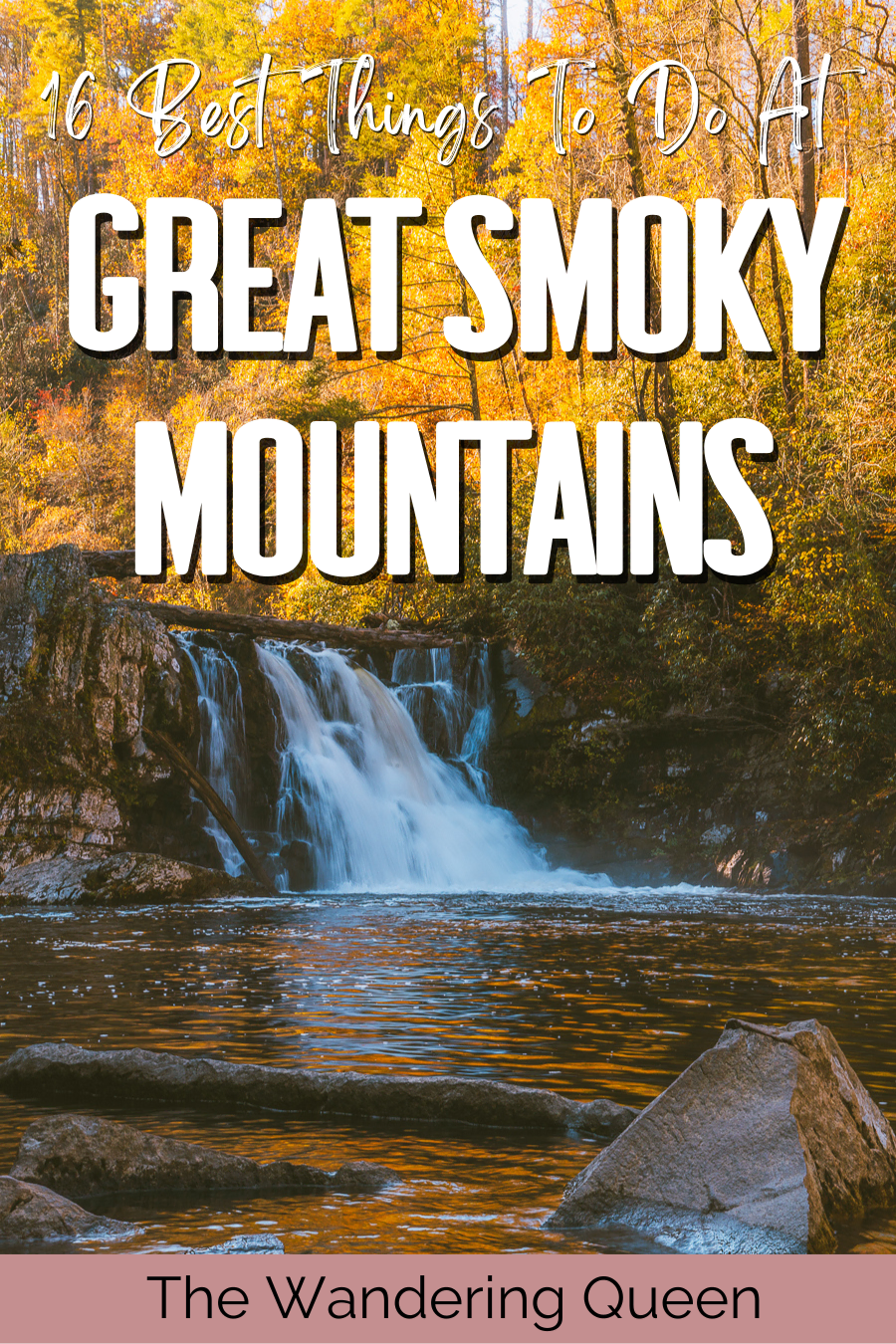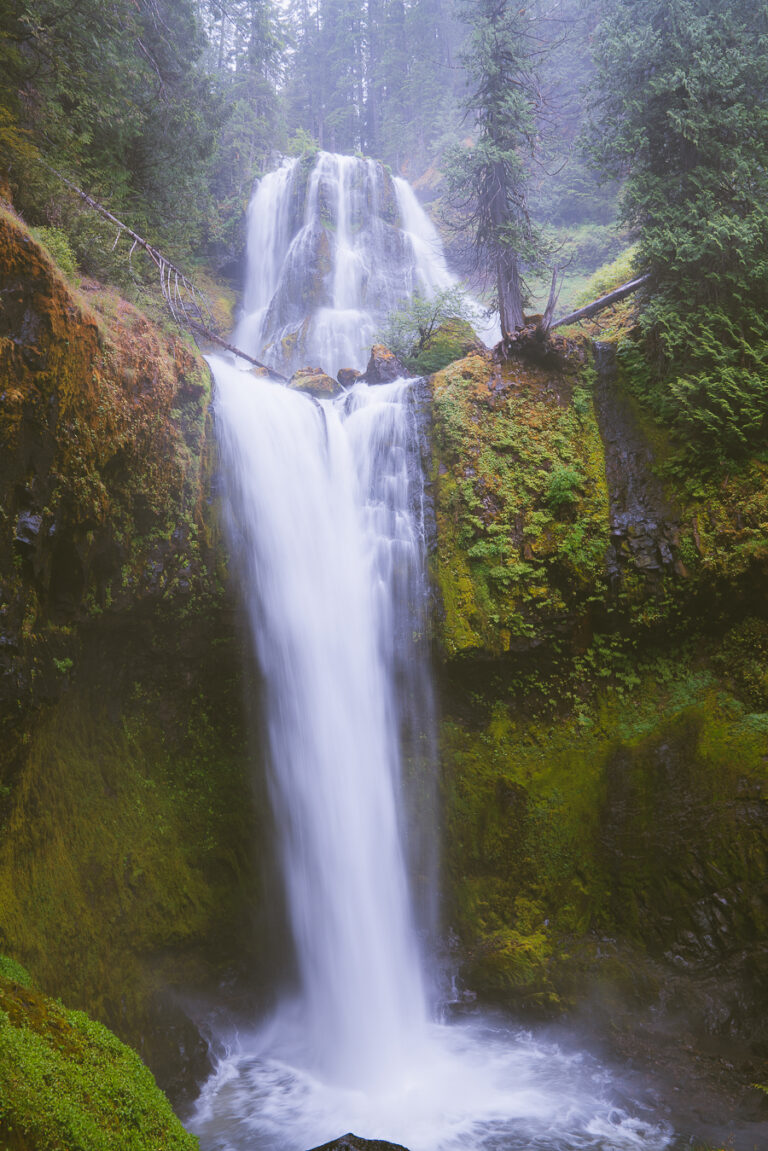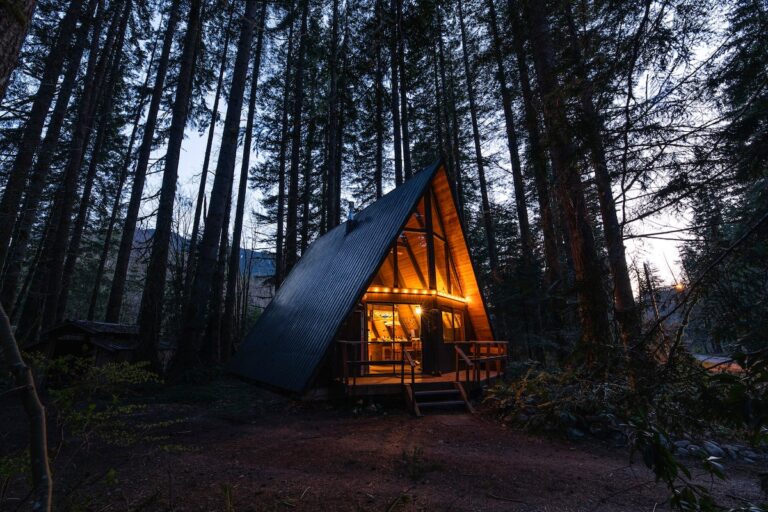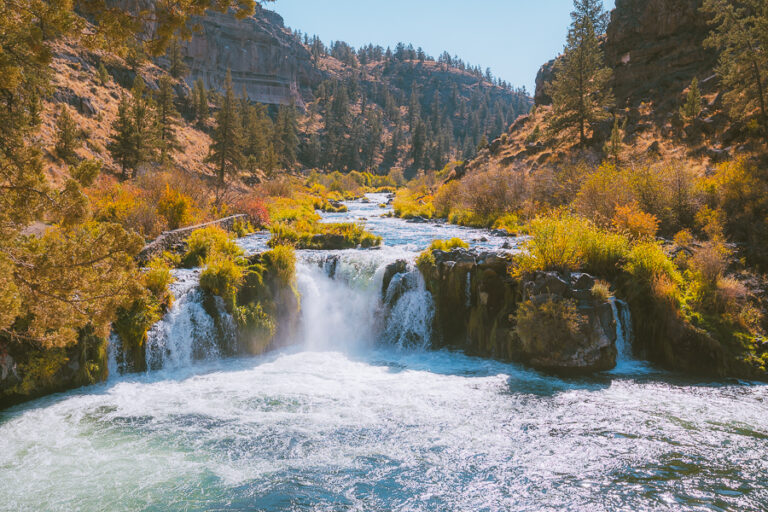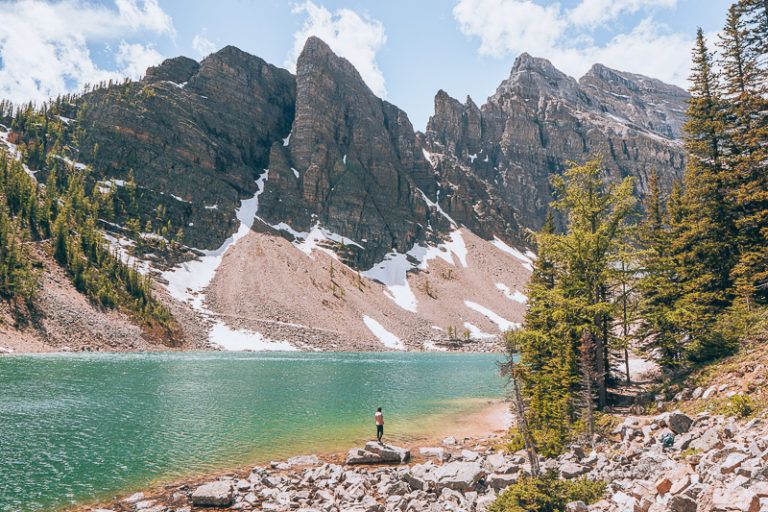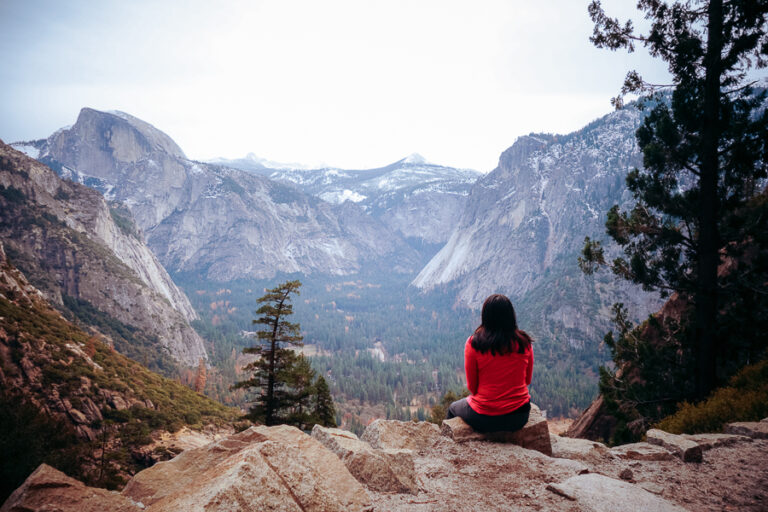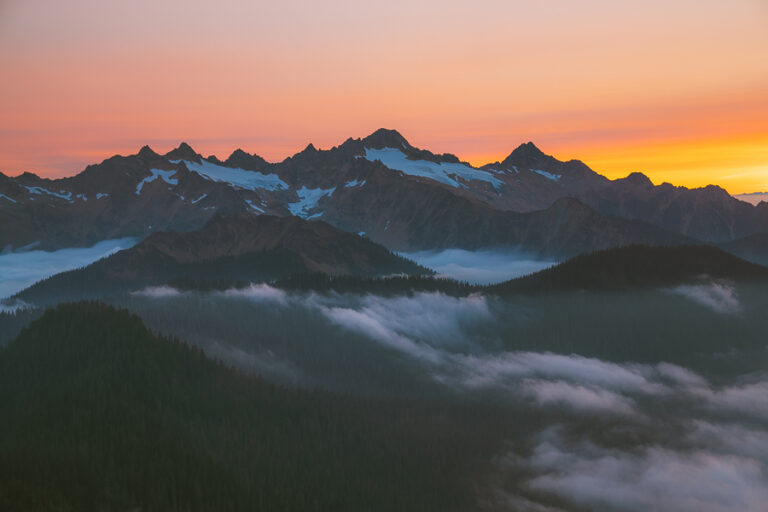16 Best Things to Do in Great Smoky Mountains | National Park Guide
The Smokies is the most visited national park in the United States, and after visiting myself, it’s easy to see why. The park boasts some of the most breathtaking natural wonders, from its roaring waterfalls and rolling mountains to the magical blue mist that rests atop its peaks.
As the park has so much to offer, it attracts visitors of all kinds. This includes families, adventure seekers, history buffs, wildlife enthusiasts, and many others.
If you find yourself in the adventure-seeking category, like myself, you’ll be pleased to find a plethora of Smokies hiking trails. And if not, there’s still plenty more that this national park has to offer. So stick around as we unpack the best things to do in Great Smoky Mountains.
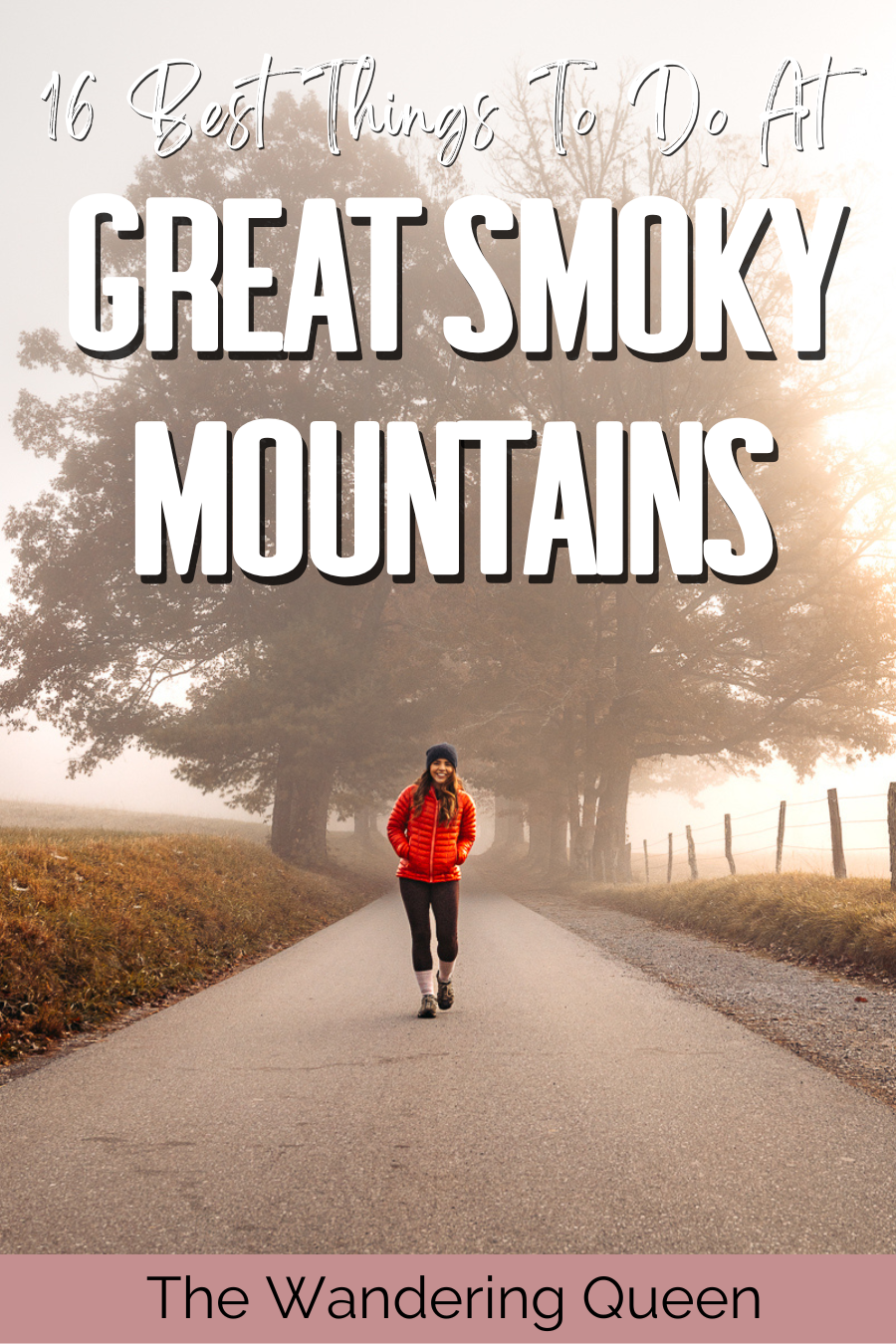
Disclosure: This post contains affiliate links. If you click one of them, I may receive a small commission (for which I am very grateful for) at no extra cost to you.
Great Smoky Mountains National Park
Related Posts
Best Time to Visit Great Smoky Mountains
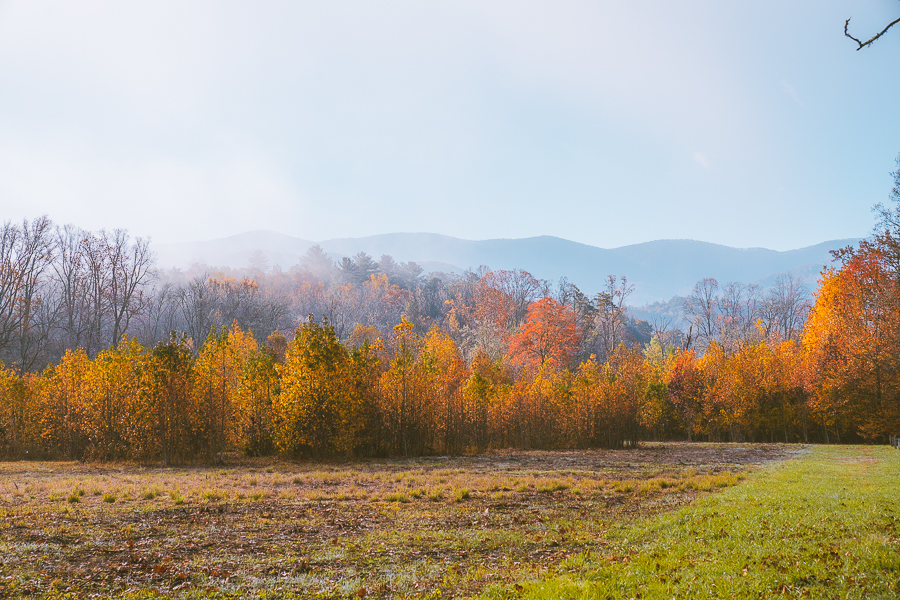
Wondering when to visit Great Smoky Mountains? The truth is, all four seasons come with their own charms and scenery. So, the best time to go will depend on the experience you wish to have. To help you, here is a breakdown of what to expect in each season:
- Spring (March to May): Great for hiking or sightseeing, as there’s an abundance of wildflowers blooming in the park. However, the weather can be unpredictable.
- Summer (June to August): The most crowded time to visit, despite the hot and humid weather, afternoon showers, and thunderstorms. Many find it ideal for sightseeing.
- Fall (September to November): Weather-wise, this is the best time to visit. Expect warm and pleasant days, cold nights, and breathtaking fall colors as far as the eye can see. This is a popular time of year for hiking the Great Smoky Mountains, so the crowds are pretty insane.
- Winter (December to February): The park remains open; however, several roads and trails may be inaccessible. The lower elevations offer a winter wonderland and fewer crowds.
Map Of Things to Do in Great Smoky Mountains
How to Get to Great Smoky Mountains

Great Smoky Mountains National Park is located between Tenessee and North Carolina. On the Tenessee side, the nearest airport is McGhee Tyson Airport near Knoxville. This is the closest airport to the park, just 25 miles (40 minutes) away. You can also reach the park via Nashville International Airport, which is around 188 miles (3 hours) from the park.
In North Carolina, the Asheville Regional Airport is the closest, situated around 60 miles east of the Cherokee entrance. Alternatively, there’s the Charlotte Douglas International Airport, around 145 miles (2 hours and 40 minutes) from the park.
What To Pack For Great Smoky Mountains National Park
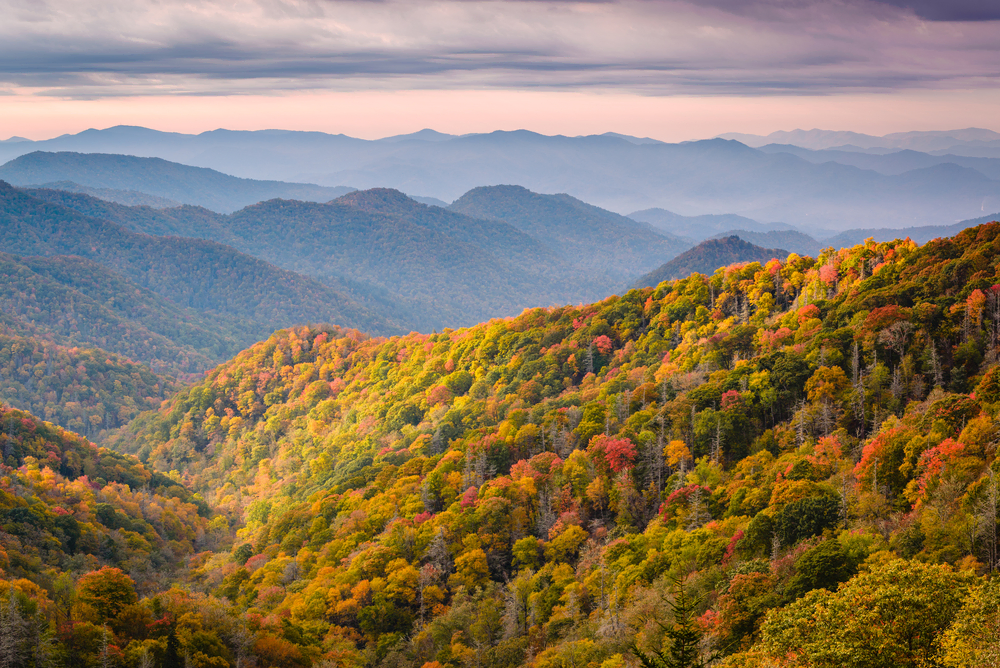
- Sunscreen: One of the ten hiking essentials, so make sure to pack this for safety. >Buy Sunscreen
- Hiking Boots/Shoes: If you use tennis shoes, you can easily hurt your toes hitting a rock by accident (Trust me, I have done it so many times before). >Check Out My Hiking Shoes
- Hiking socks: Having the correct socks helps you prevent getting blisters. Smart Wool is probably my favorite brand out there. >Buy Hiking Socks
- Water Reservoir: Water reservoirs help prevent me from getting dehydrated while hiking. The great thing about this reservoir is that it doesn’t have the plastic taste. >Here Is My Water Reservoir
- Water: Stay nice and hydrated.
- Sunglasses: It can get sunny, so make sure to pack some sunglasses. >Check Out These Sunglasses
- Snacks: The best snacks are jerky, nuts, energy bars. Clif Bars are great for hiking.
- Camera: The Sony A6000 was one of the first cameras I started traveling with. The Sony A6000 is an excellent camera for people who want to start improving at travel photography. >Buy Sony Camera Here
- First Aid Kit: This is one of the first things I bought when I started going on adventures. It is super portable. >Buy This Awesome First Aid Kit Here
- Day Pack to carry all your things: The REI bag I have linked, we have had for seven years now, and it is still going strong! >Buy This Great Quality Backpack
- Headlamp: A headlamp is an absolute must in case you get stranded in the dark! It is a lot more portable and easier to use than a flashlight. >Buy A Headlamp Now
- Leggings or Hiking Pants: I always wear leggings while hiking because I feel most comfortable with it! >Click For My Favorite Hiking Leggings
- Breathable sweat-wicking shirts: Cotton shirts soak up your sweat when hiking, so wear something breathable. >Check out this awesome breathable shirt here.
- Sweater: I wore this in the fall when the hikes were very easy and it was a little chilly. >Check Out My Sweater Here
- Sports Bra: For women.
- Jacket: In case you get chilly at night. This is also a good idea in the Spring and Fall. >Buy My Favorite Jacket
- Tripod: This is an optional item, but it is excellent for getting the ideal sunset pictures. >Check out this tripod
- Knife: I always carry a knife in my backpack just in case. >Check Out My Knife Here
- National Park Pass: I highly recommend getting a year-long America The Beautiful Pass. >Get It Here
- Map: I love the National Geographic Maps! They are the best! >Buy One Here
Claim your FREE Hiking Checklist
Ready to start hiking? Grab my free hiking checklist and never forget anything at home!
Time Needed for the Top Smoky Mountains Things to Do
You’ll need to spend at least three days in the Great Smoky Mountains to experience all of the main sections of the park. This includes everything from wildlife viewing and hiking in Cades Cove to driving along the Roaring Fork and the scenic Newfound Gap Road.
Where to Stay for Your Smoky Mountain Vacation
If you are looking to stay in Great Smoky Mountains National Park, your only options are Le Conte Lodge and camping. Fortunately, there are many incredible accommodations in the surrounding towns. Below are some top lodgings for visiting the Great Smokies.
Courtyard by Marriott Gatlinburg Downtown (Luxury)
This is where we stayed when visiting Great Smoky Mountains. It’s a modern hotel located in the nearby town of Gatlinburg, just 5.3 miles from the national park.
Many of the rooms boast mountain views and even a whirlpool tub and fireplace. We also liked that the hotel staff were friendly and the hotel was within close proximity to the main street and other points of interest. >>>Check Availability
LeConte Lodge (Mid-Range)
If you’re looking for accommodation in Great Smoky Mountains National Park, check out LeConte Lodge. This is the only place where you can stay overnight other than the campgrounds located within the park.
LeConte Lodge features seven rough-hewn cabins and three multi-room lodges, all nestled atop Mount LeConte — the park’s third-highest peak. Staying here offers exceptional views and easy access to the Great Smokies’ many hiking trails. You do have to hike to get here, though. >>>Check Availability
Great Smokies Inn – Cherokee (Budget)
For affordable accommodation near Great Smoky Mountain National Park, head to Cherokee. Here, just off the scenic Blue Ridge Parkway, you’ll find the charming Great Smokies Inn.
The property offers a lovely selection of rooms and a large outdoor pool with breathtaking mountain views. You’ll also be ideally located just 0.9 miles from the Great Smokies and a short distance from attractions like the Museum of the Cherokee Indian and the Oconaluftee Indian Village. >>>Check Availability
Camping in Great Smoky Mountains
Camping in Great Smoky Mountains offers a unique and immersive experience. You’ll find ten campgrounds scattered throughout the national park. All of these feature a range of amenities, including fire grates, flush toilets, and picnic tables. However, there aren’t any showers, water, or electrical hookups in the park.
Note that group campsites are tents only and require a reservation. To reserve a spot for you and your fellow campers, visit the park website. You can also find additional information on camping in the Great Smokies here. Below is a list of the ten campsites:
- Abrams Creek
- Balsam Mountain
- Big Creek
- Cades Cove
- Cataloochee
- Cosby
- Deep Creek
- Elkmont
- Look Rock
- Smokemont
Read More: Best Places to Stay in the Smoky Mountains | 13 Great Spots
Tours At Great Smoky Mountain National Park
16 Best Things to Do in Smoky Mountains, Tennessee
So, you’ve planned your trip to the Smokies but are still unsure about what to include in your itinerary. To help you out, here are the 16 best things to do in the Great Smoky Mountains for an unforgettable trip.
1. Hike Clingmans Dome
- Distance: 1.3 miles roundtrip
- Elevation Gain: 331 feet
- Difficulty: Moderate
- Trail Guide: Link
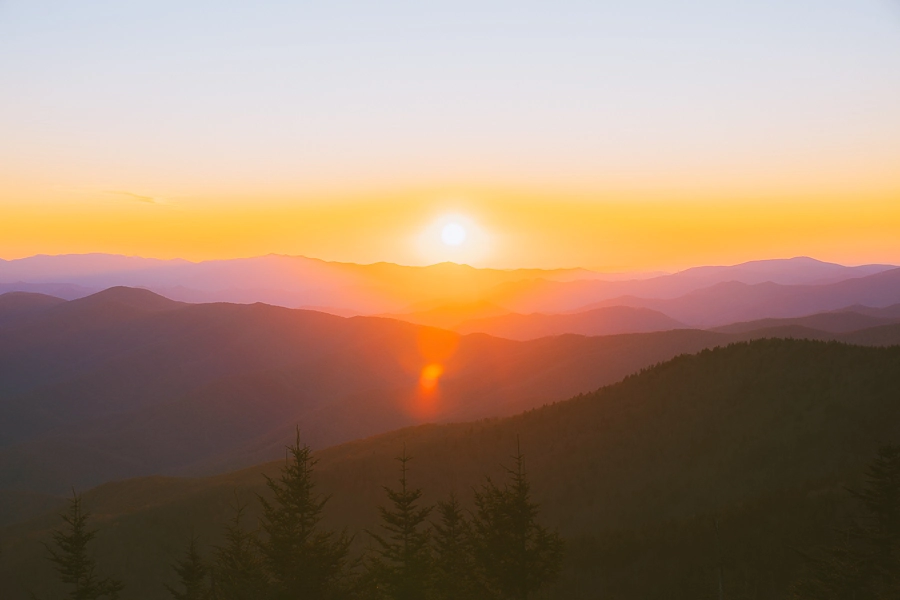
No trip to the Smokies is complete without hiking Clingmans Dome. This is the most popular trail in the national park, and for good reason. The 1.3-mile roundtrip takes you to the highest point along the Appalachian Trail. From a height of 6643 feet, you’ll get to enjoy unobstructed views of the Great Smoky Mountains and the lush spruce-fir forest below.
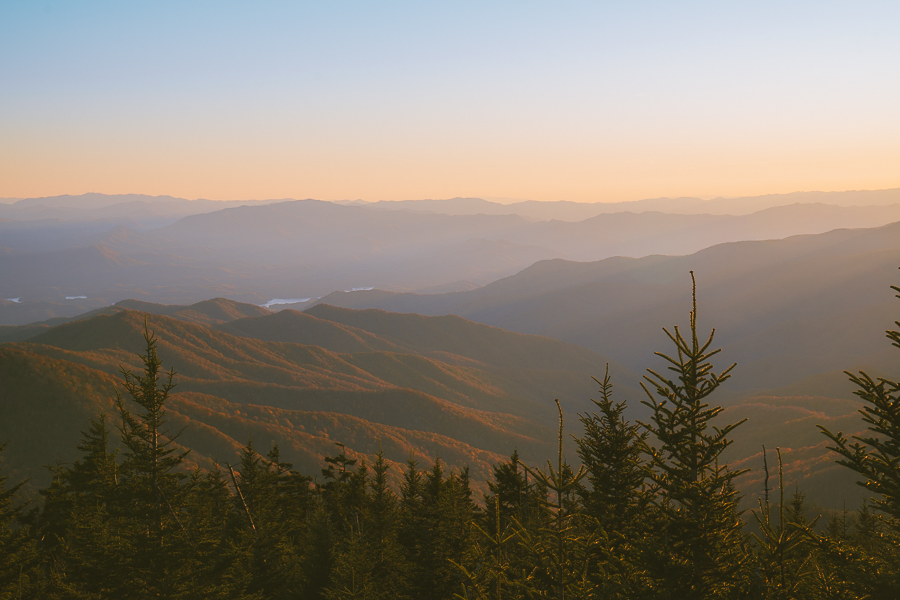
We went during sunset, which offered beautiful views as the mountains transformed into colorful silhouettes. However, it’s important to note that this hiking trail can get very crowded. We waited two hours to get to the Clingmans Dome parking lot. For the best experience, it may be better to tackle this one on a weekday.
2. Admire the Wildflowers
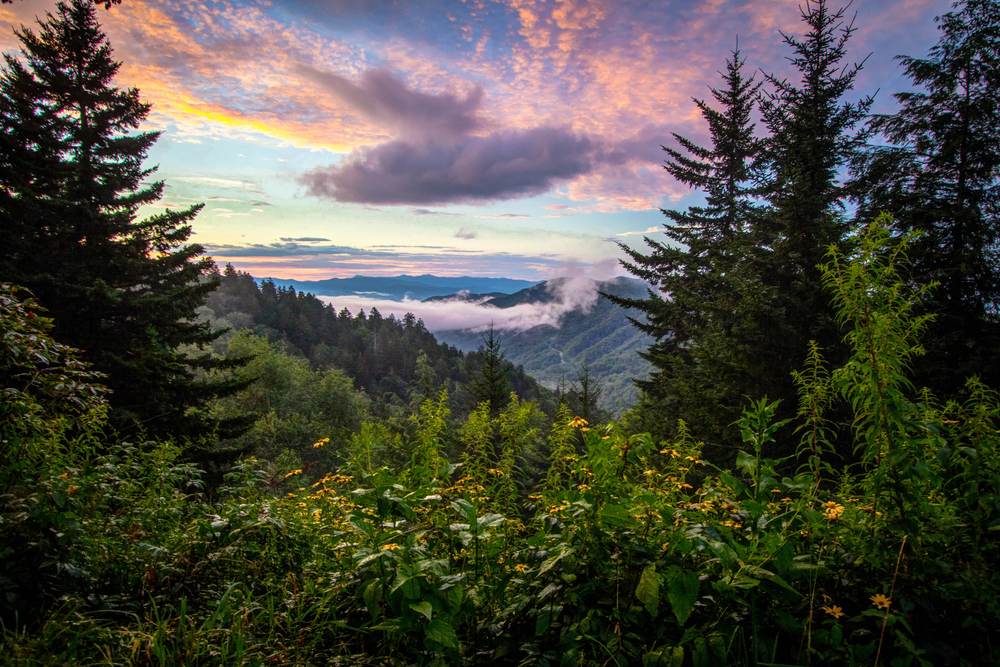
One characteristic of the Smokies that continues to attract visitors from all over is its abundance of wildflowers. In the spring and summer months, people flock to the national park to admire the colorful display. The Great Smoky Mountains houses more than 1,500 types of flowering plants, including orchids, trout lilies, several types of trillium, and plenty more.
For the best experience, visit in April or May. During this time, plants like the brightly-colored flame azalea begin to bloom, particularly in the lower elevations. This is a beautiful sight, so be sure to bring along your camera gear to capture some Great Smoky Mountains National Park photos.
3. Explore Fontana Lake
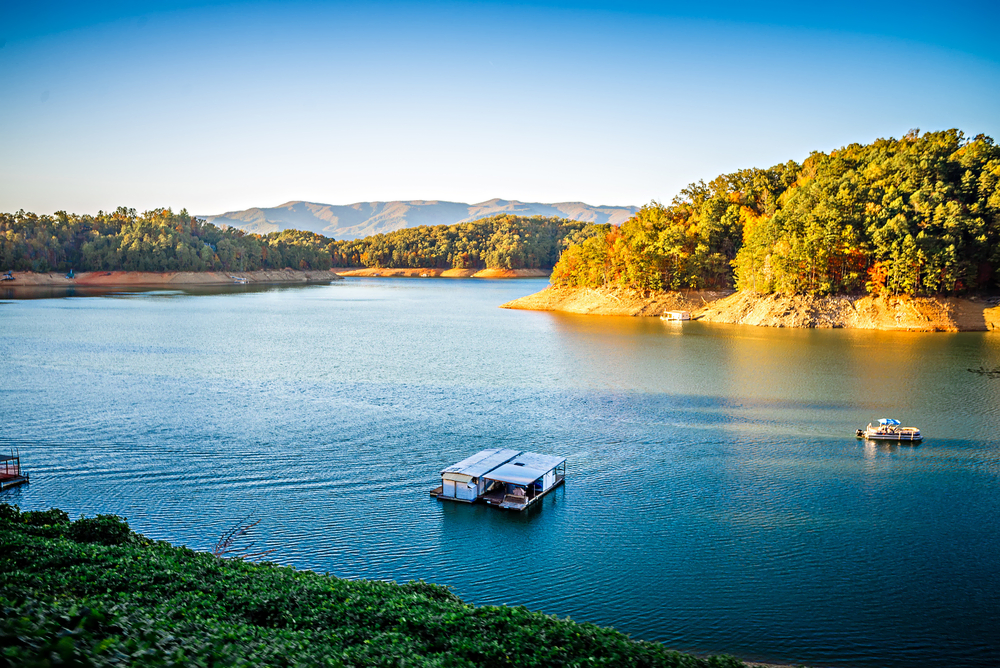
Located on the southern end of the Great Smoky Mountains is the gorgeous Fontana Lake. A trip here is a must for your Smokies itinerary. The drive alone is scenic and memorable, especially during the fall months.
Upon reaching the lake, you’ll be greeted by 240 miles of shoreline and enchanting waters. To make the most of your time here, rent a boat in Fontana Village or the Nantahala Outdoor Center. Or, bring along a picnic basket and enjoy a tasty meal while basking in the tranquil atmosphere.
Note that the lake is a fair distance from most of the park’s top attractions, so keep this in mind when planning your trip.
4. Visit Grotto Falls
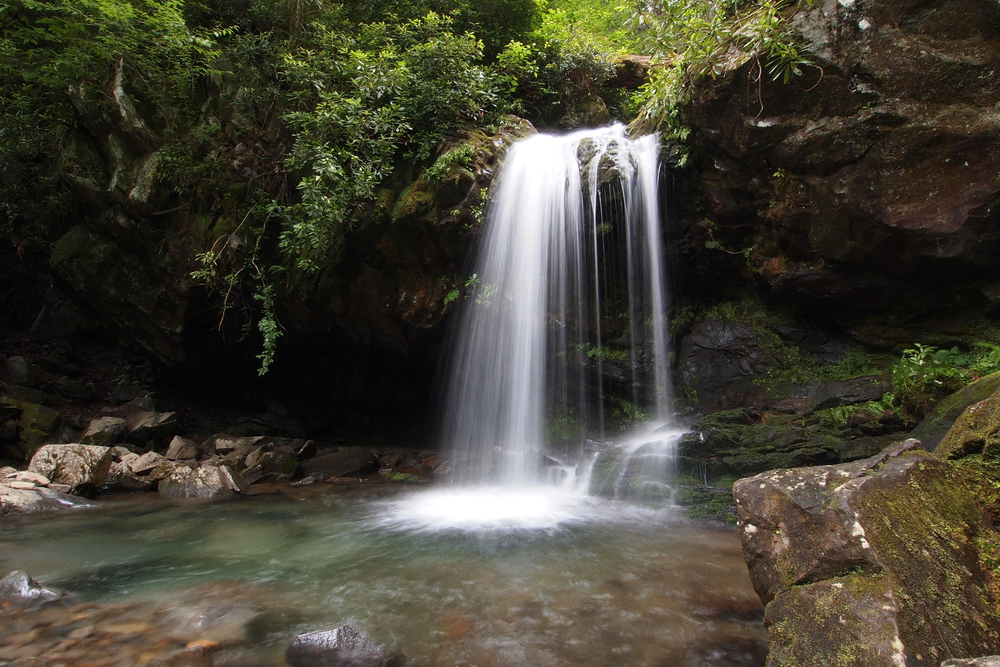
With 2,000 miles of streams and rivers, Great Smoky Mountains National Park is home to more than 100 waterfalls and cascades. Many of these can be reached via the park’s incredible hiking trails.
The most popular waterfall in the Smokies is Grotto Falls. This can be reached via the Trillium Gap Trail. Ducking behind this waterfall makes for an excellent picture and a refreshing stop during a hot summer day.
5. Marvel at the Abundant Wildlife
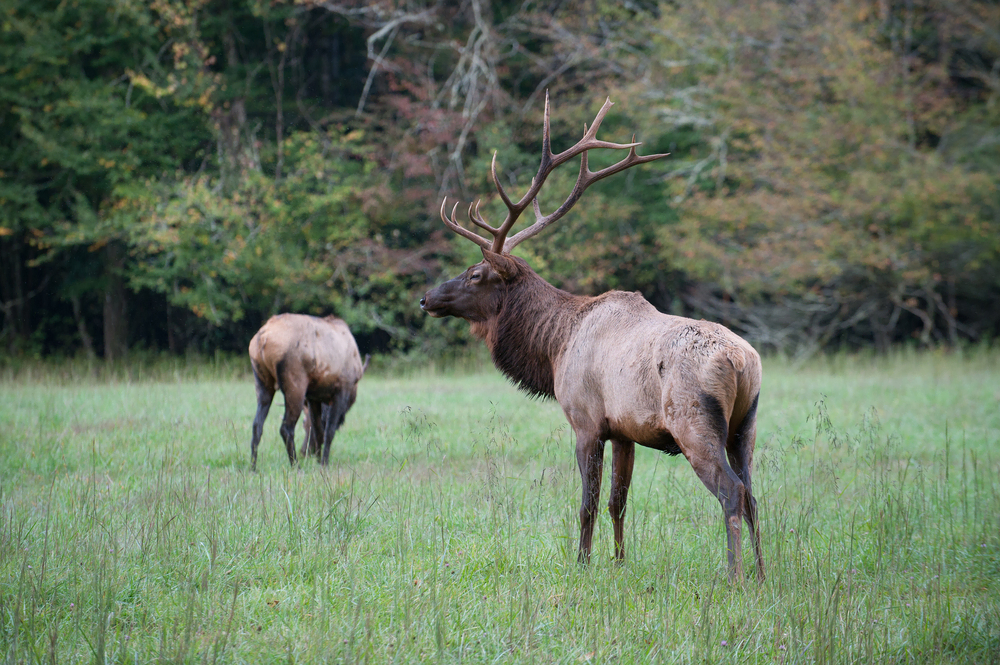
Great Smoky Mountains is home to an array of animals. This includes 65 mammal species, 67 native fish species, 80 reptile and amphibian species, and more than 200 bird species.
Some of the most famous residents of the national park are American black bears, white-tailed deer, woodchucks, and the majestic elk. Many of these animals can be seen roaming the forests and meadows of the Smokies.
For the best and safest viewing experience, be sure to reach out to a park ranger. They’ll help you find some of the top spots for marveling at these beautiful creatures.
6. Drive Through Cades Cove
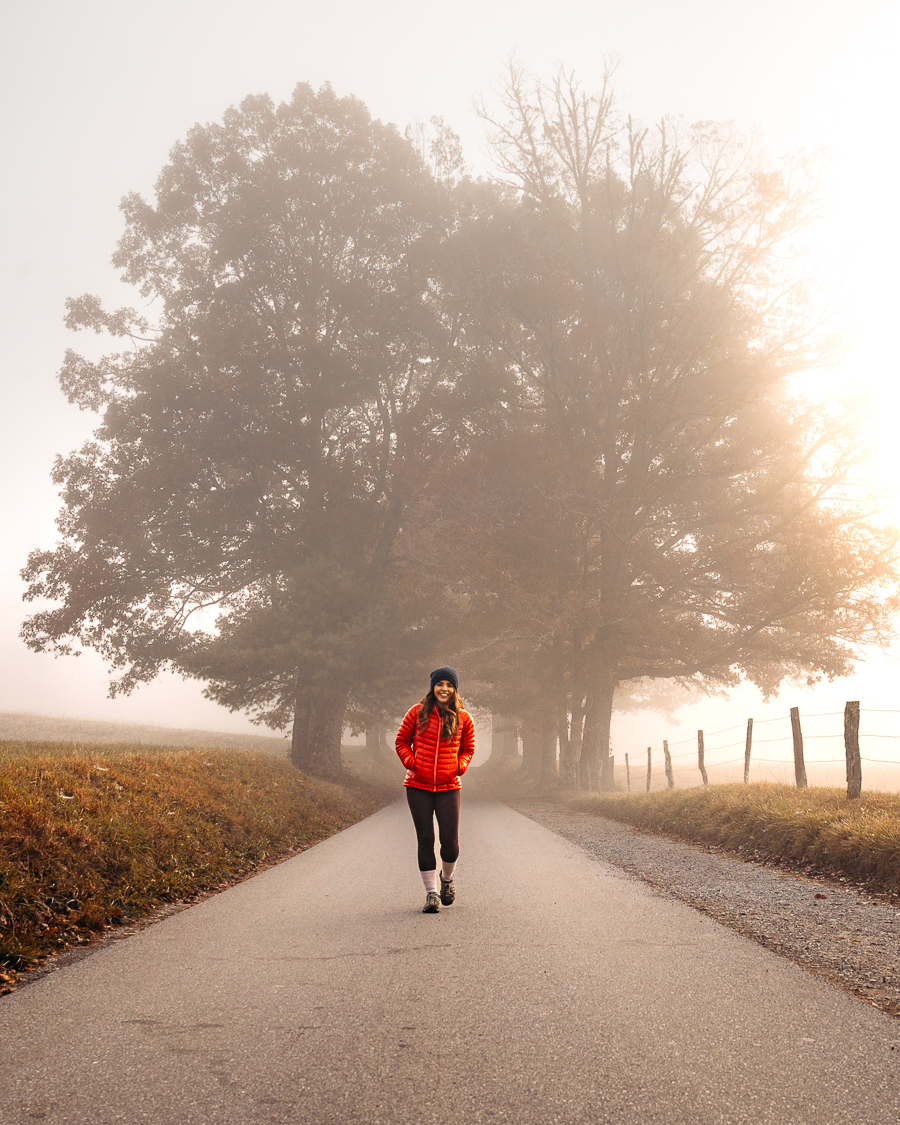
Perhaps the most popular area in the Smokies, Cades Cove is a must for anyone visiting the national park. Throughout most of the year, you can expect to find cars lined up by the hundreds, waiting to enter this scenic loop road and marvel at some of the park’s many natural wonders.
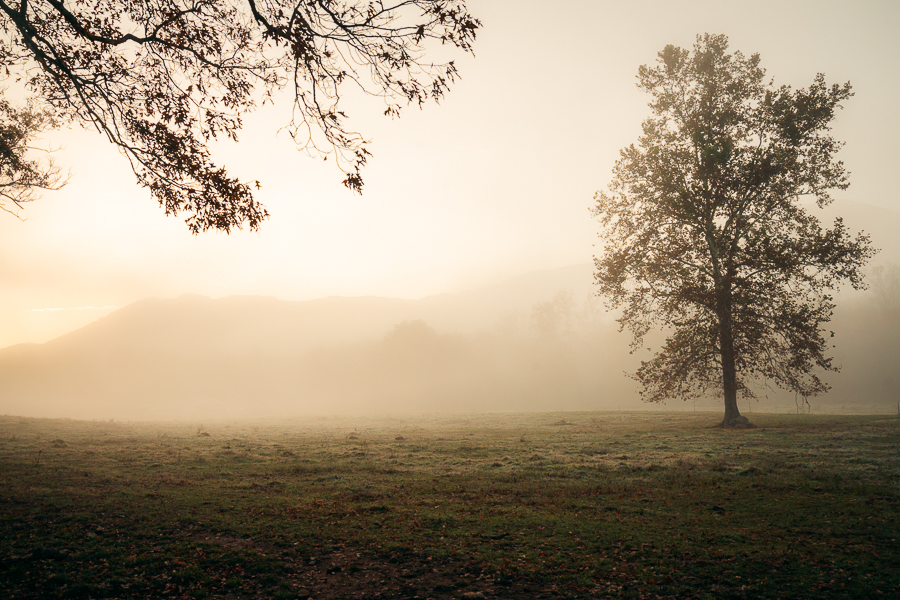
The Cades Cove loop offers some of the best wildlife viewing opportunities and some of the most breathtaking scenery. There’s also the opportunity to discover the park’s rich history by stopping by some of its historic buildings. This includes the John Olive Cabin, Cable Mill, and plenty more.

Tip: The Cades Cove loop road opens at sunrise, so try to be early to beat the crowds. The park also has car-free days each Wednesday from May to September, where you can enjoy hiking or biking along the scenic route.
7. Enjoy a Scenic Drive Along Newfound Gap Road
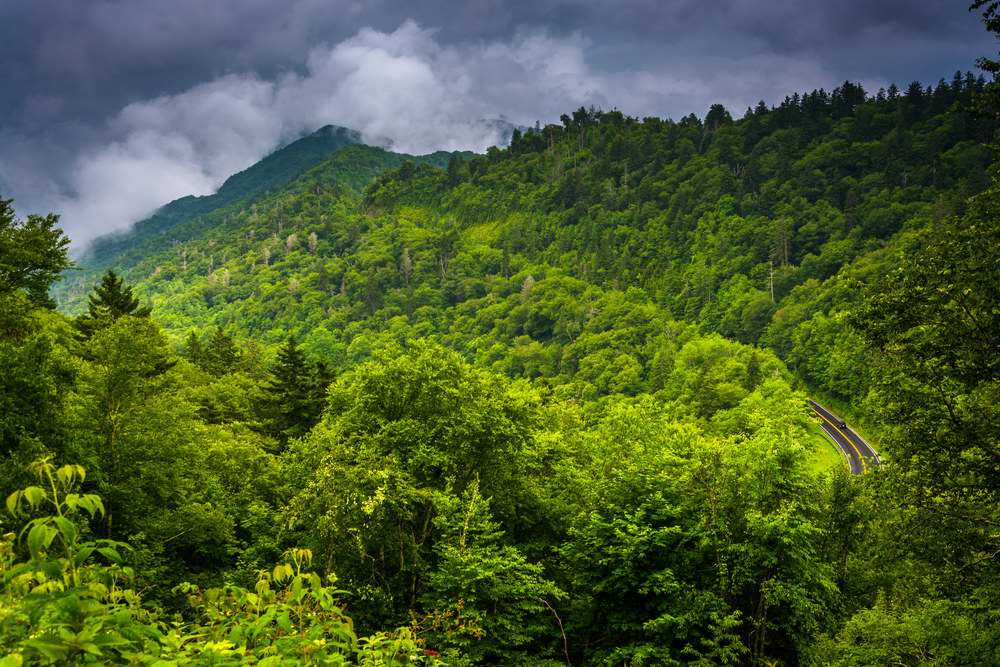
Newfound Gap Road is one of the most popular scenic drives in the Great Smoky Mountains. It is the lowest drivable pass of the national park and takes visitors through some of the Smokies’ most stunning areas.
Along the way, marvel at the variety of forests, including pine-oak, cove hardwood, northern hardwood, and, of course, the spruce-fir forest that the drive is most famous for.
There are also numerous places to stop and take in the views. At the fourth mile, you’ll find Campbell Overlook. This offers a unique vantage point of the park and Mount LeConte. Around 14.7 miles in, stop by the Newfound Gap & Rockefeller Memorial. Newfound Gap Road is also one of the best routes for reaching the popular Clingmans Dome.

Tip: If you’re visiting in the fall, this drive is a must, as the scenery surrounding the route takes on a vibrant selection of red and orangy hues.
8. Tour Mingus Mill
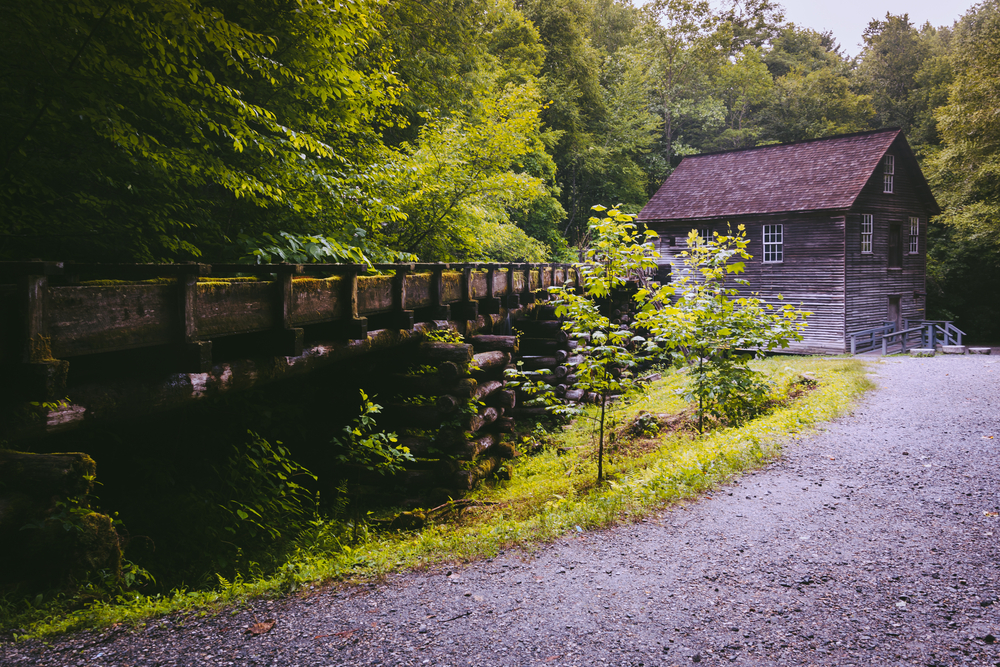
Accessible via the scenic Newfound Gap Road is the historic Mingus Mill. This popular attraction dates back to 1886. It was restored in 1937 and continues to churn to this day.
If you’re at all interested in the history of the Appalachian range, a stop here is a must. When visiting, you’ll be able to explore the inside of the historic grist mill and learn all about the way it operates. You’ll also have plenty of opportunities to snap a few pictures and marvel at the surrounding scenery from the hiking trails nearby.
9. Take on Abrams Falls Trail
- Distance: 5.5 miles roundtrip
- Elevation Gain: 629 feet
- Difficulty: Moderate
- Trail Guide: Link
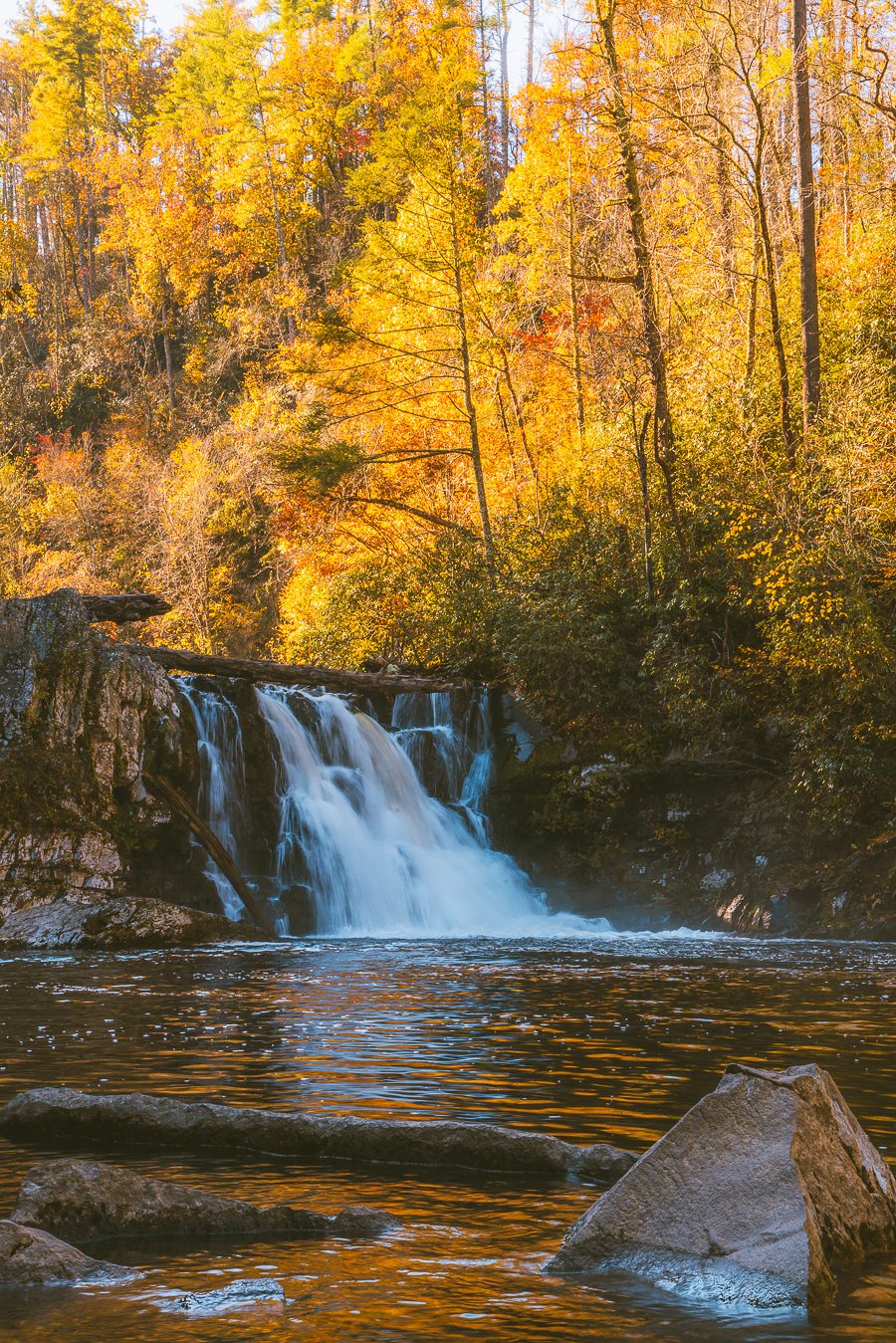
One of the top Great Smoky Mountains things to do is Abrams Falls — one of the most popular waterfalls in the national park. It’s named after a Cherokee chief whose village once occupied land alongside the creek.
To reach the waterfall, you’ll need to complete a 5.5-mile roundtrip through the forest. The trail is moderate in difficulty as it features a rough and unpaved path and requires you to cut across water every now and then.
This is a great hike if you’re visiting during the warmer months. The deep pool at the base of the waterfall provides a wonderful setting for a picnic lunch. Just note that swimming here can be quite dangerous due to the strong currents and undertow.
10. Visit Cataloochee
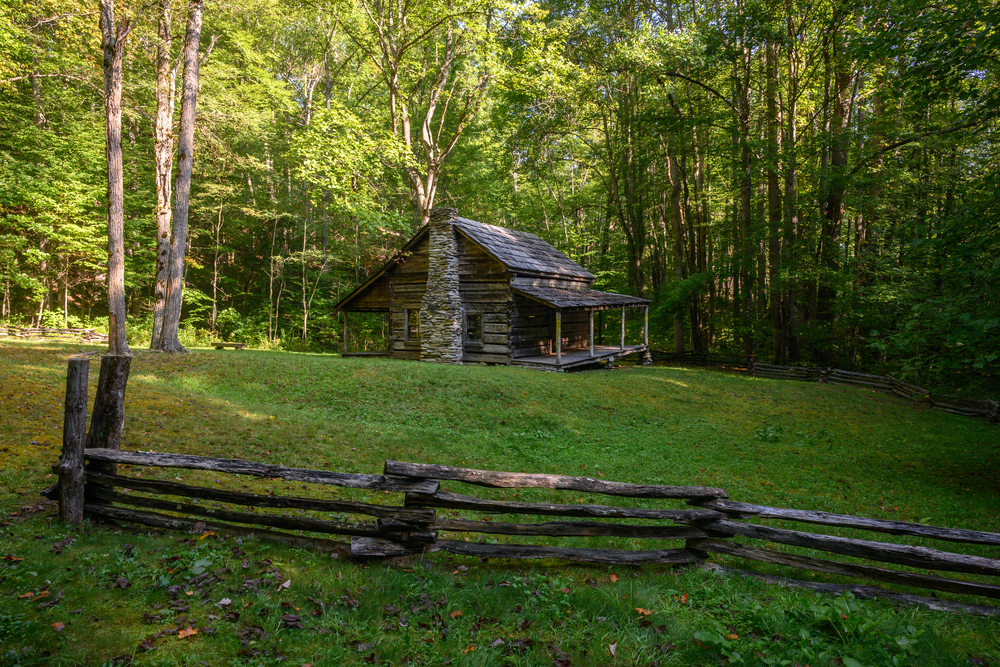
Whether you’re a history buff or nature enthusiast, you’ll want to include a visit to Cataloochee in your Smokies itinerary. The remote valley was once home to the Cherokee people. Today, it’s a popular spot for visitors wanting to experience the area’s rich history.
Within the valley, you’ll find a number of historic homes and buildings. Some popular structures include the Beech Grove School, Little Cataloochee Church, the Palmer House, and the Caldwell House.
Cataloochee is also a great spot for viewing elk, as these animals are often seen grazing the pastures of the valley.
Download my free Outdoor Photography Guide
11. Explore the Oconaluftee Mountain Farm Museum
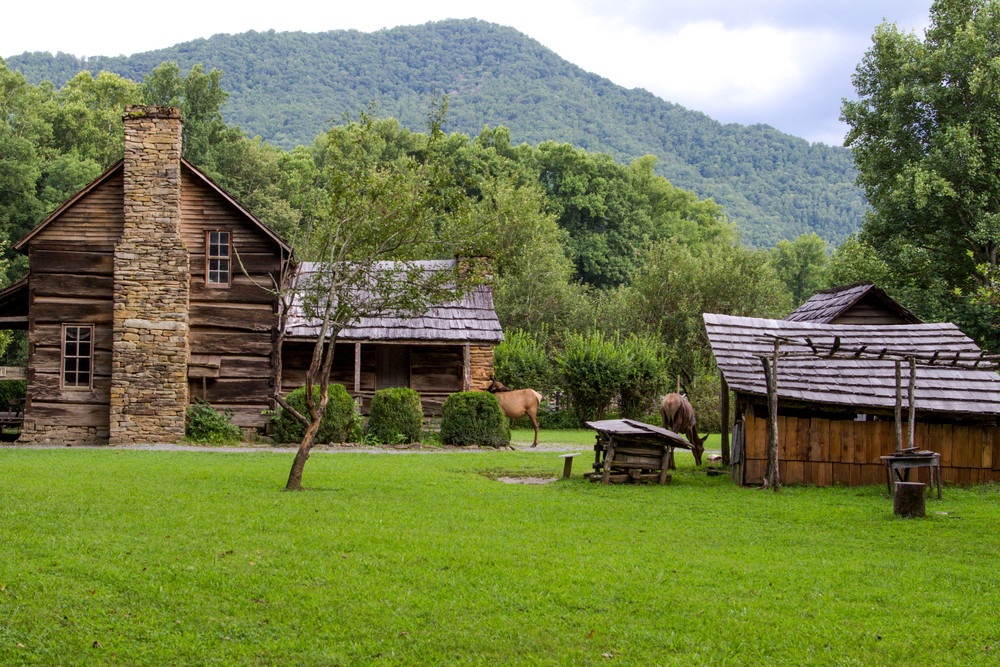
Located near the Oconaluftee Visitor Center and the Oconaluftee River is the famous Mountain Farm Museum. This museum is a cluster of several historic log buildings from around the park. Many of these date back to the late 19th century, offering a unique glimpse into the area’s rich past.
When wandering around the museum, admire the structures and the various remnants of the pioneers’ way of life. There’s also a walking trail nearby that takes you along the beautiful Oconaluftee River. This offers incredible views of the surrounding scenery and, sometimes, the grazing elk.
12. Tackle the Laurel Falls Trail
- Distance: 2.4 mile roundtrip
- Elevation Gain: 396 feet
- Difficulty: Easy
- Trail Guide: Link
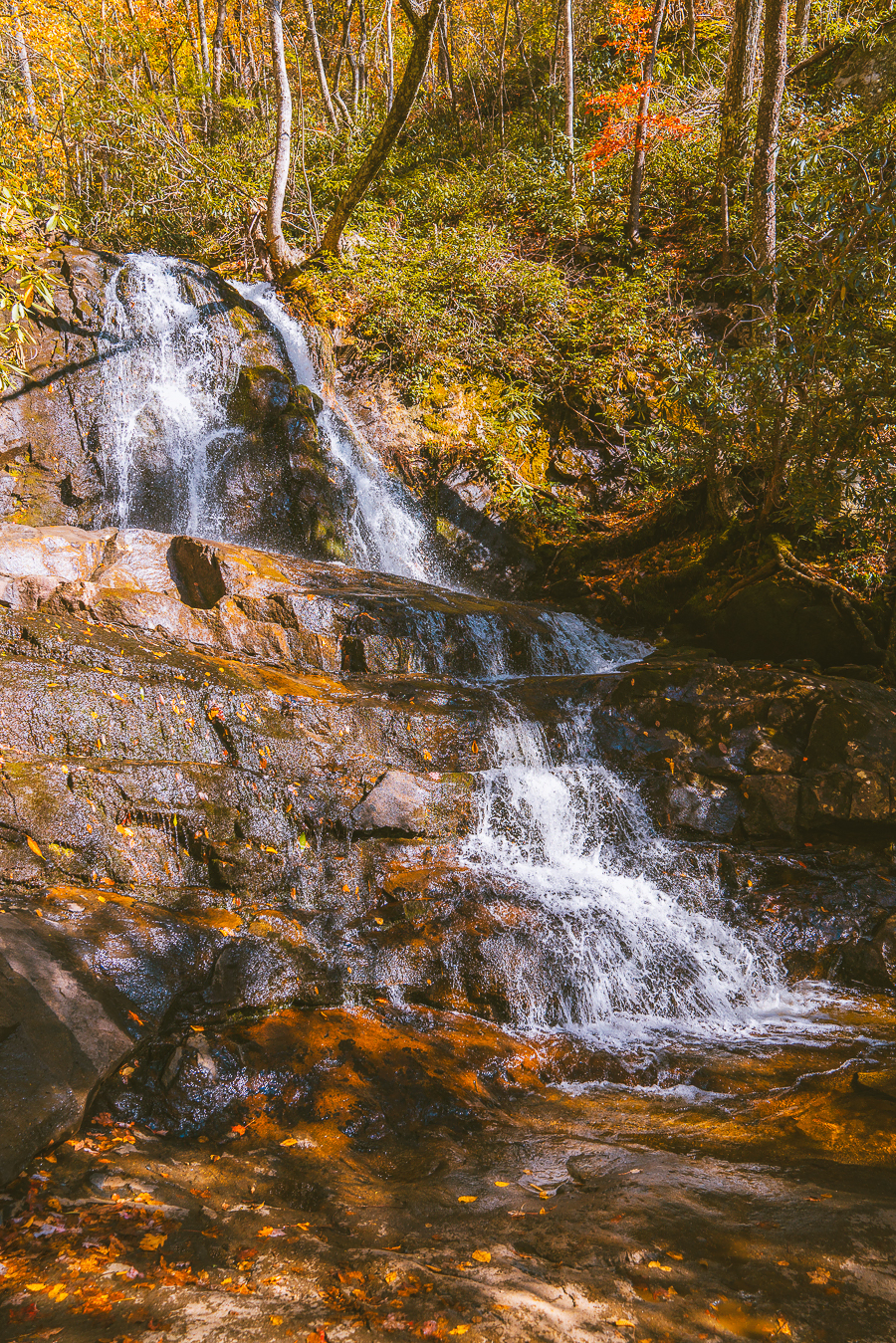
If you want to experience one of the Smokies’ most popular waterfalls without a difficult hike, try Laurel Falls. This trail is quick and easy, ascending Cove Mountain and taking you past an array of breathtaking scenery. It’s especially beautiful during the fall.
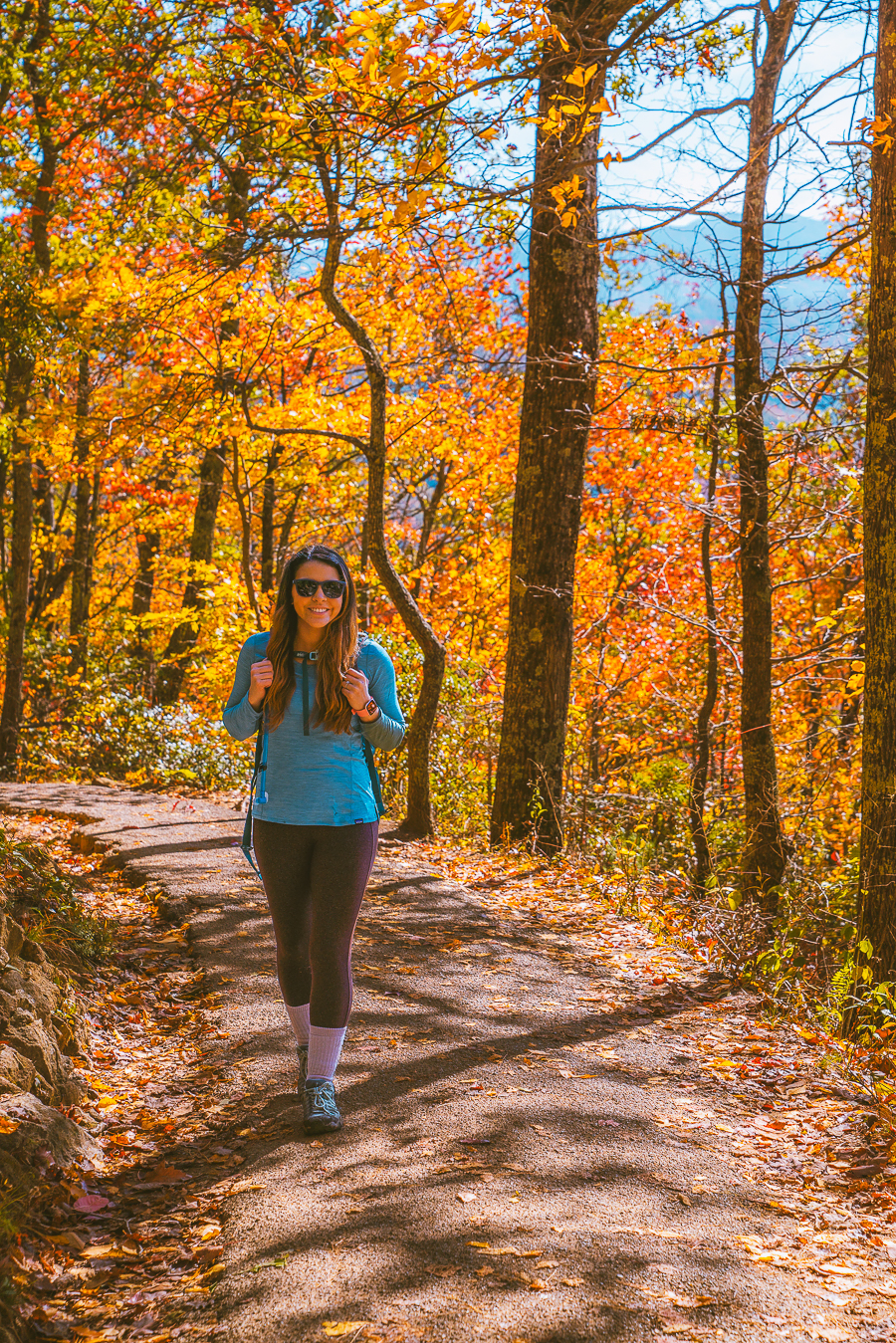
Along the way, you’ll pass by the 80-foot-high Laurel Falls, which is named after the mountain laurel shrubs that bloom along the trail. This is a great spot to rest and take a few pics before continuing toward the Cove Mountain summit.
Note that this trail can get very crowded. For the best experience, visit on a weekday or try to start early.
13. See the Fall Colors
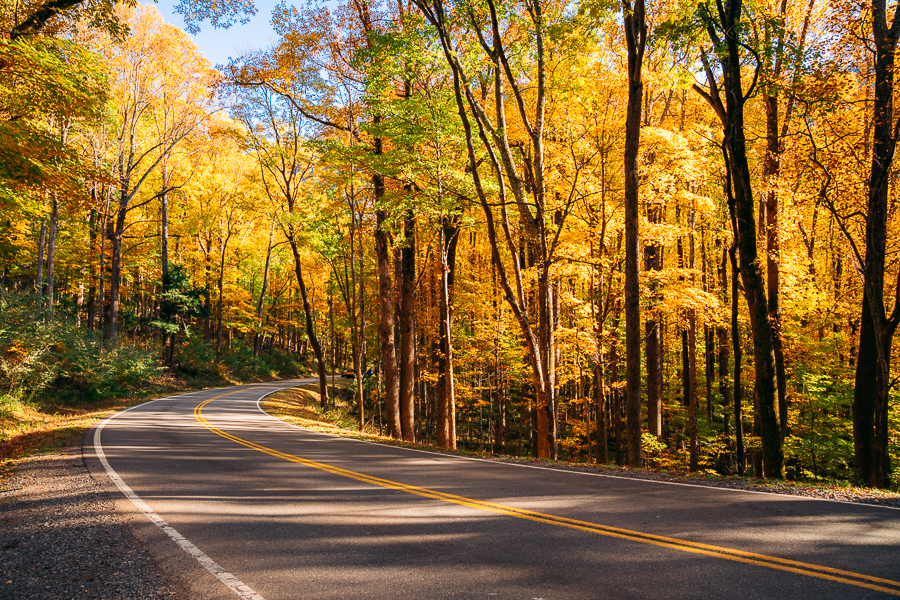
The Great Smoky Mountains is renowned for being one of the best national parks to visit in the fall. That’s because the park’s 100-plus native tree species transform from lush green to a magical display of yellows, oranges, and reds.
For the best views, visit in September or October. You can choose to take one of the many scenic drives like Newfound Gap Road or hiking trails toward some of the park’s best viewpoints.
Grab Your Free Car Camping Checklist! 🚗🌲
Ready to elevate your car camping game? Snag our essential checklist to ensure you’ve got everything you need for a stress-free, fun-filled adventure! Perfect for beginners and seasoned campers alike. Download now and hit the road prepared! 🌟🎒
14. Stop by the Sugarlands Visitor Center
Another good stop for learning about the Smoky Mountains and its rich history is the Sugarlands Visitor Center. The center is located two miles south of Gatlinburg along US-441 and is a popular first stop for many people visiting the national park.
Here, you’ll find numerous exhibits showcasing the Smokies’ history and natural wonders. This includes a 20-minute film about the national park. Depending on the season, you’ll also find several ranger-led programs.
And if you’re seeking a souvenir, you’re sure to find something at the visitor center’s gift shop and bookstore.
15. Mount LeConte and Alum Cave Trail Smoky Mountains
- Distance: 11 miles roundtrip
- Elevation Gain: 3,061 feet
- Difficulty: Hard
- Trail Guide: Link
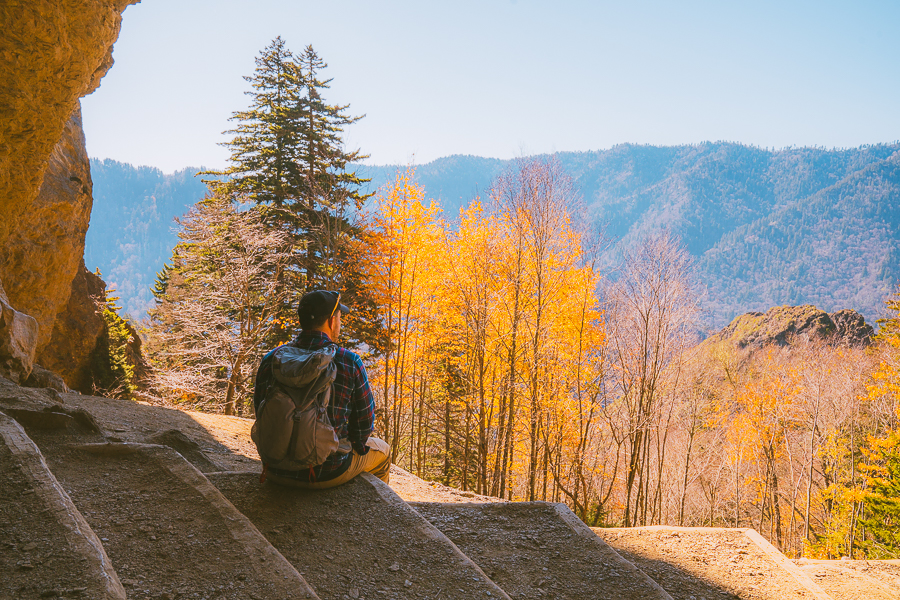
If you’re seeking a challenge, try the Mount LeConte and Alum Cave Trail. This is one of the longer trails in the Smokies and also one of my favorites. During the earlier portions of the hike, you’ll be walking alongside a river.
At 1.3 miles, you’ll come across Arch Rock, where you can rest, marvel at the geological features, and turn back if you do not wish to do the rest of the hike. Shortly after, you’ll arrive at Inspiration Point, which offers clear views of the Eye of the Needle, Little Duck Hawk, and Myrtle Point on Mount Conte.
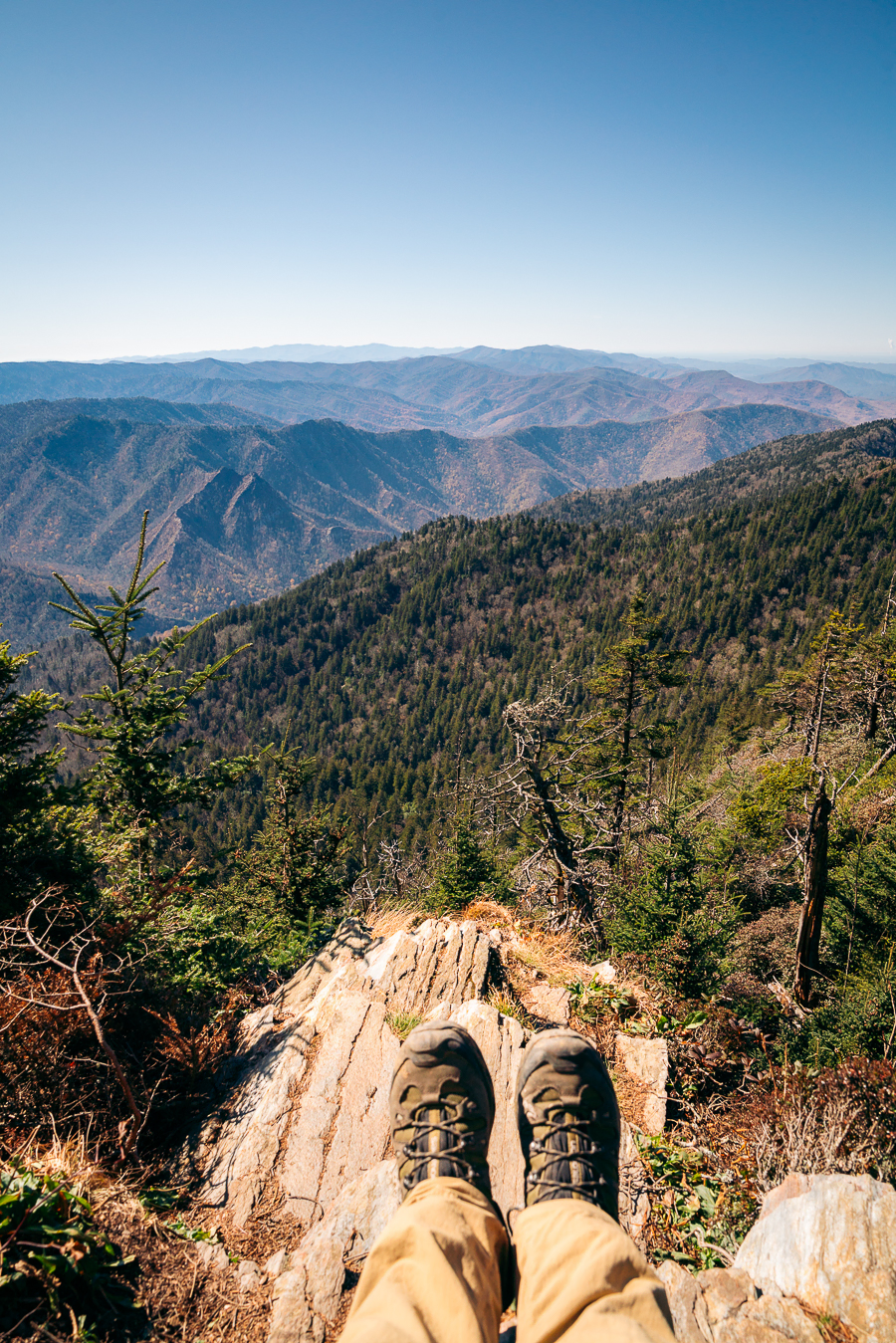
From here, the trail continues toward the peak at LeConte Lodge. You’ll be able to see nearly all of the Great Smokies.
16. Drive the Blue Ridge Parkway
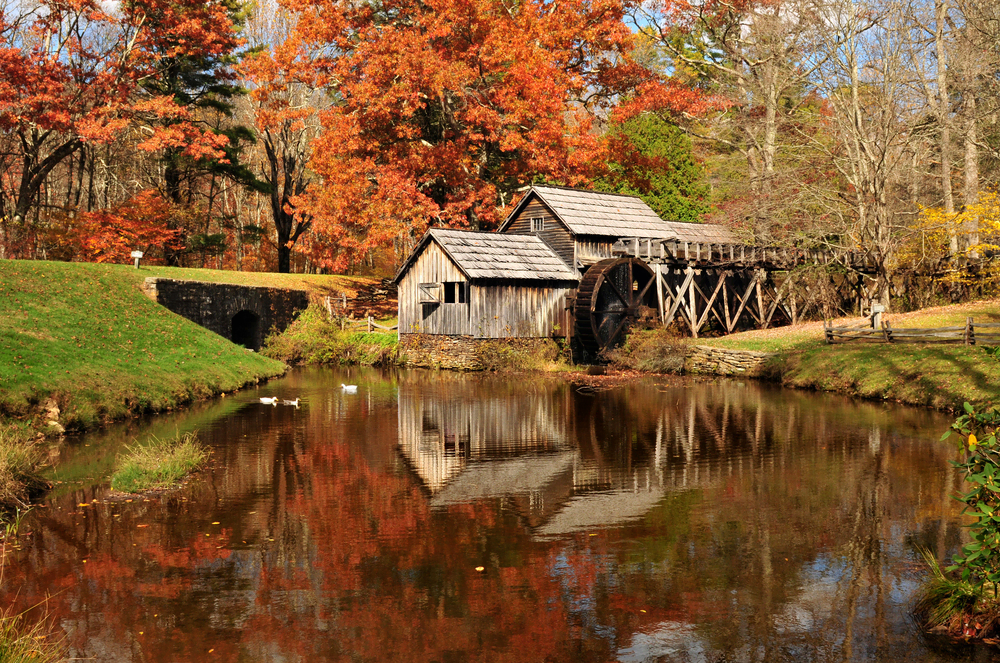
Did you know that the famous Blue Ridge Parkway begins in Great Smoky Mountains National Park? This is an incredibly scenic drive that takes you all the way up to Shenandoah National Park in Virginia. As such, it makes for a great ending to your Smokies visit.
Even if you do not wish to go to Shenandoah, it’s worth driving along the Blue Ridge Parkway for just a few miles. You’ll be amazed by the scenery along this stretch, which is especially stunning during the fall.
FAQs About Things to Do in The Smoky Mountains
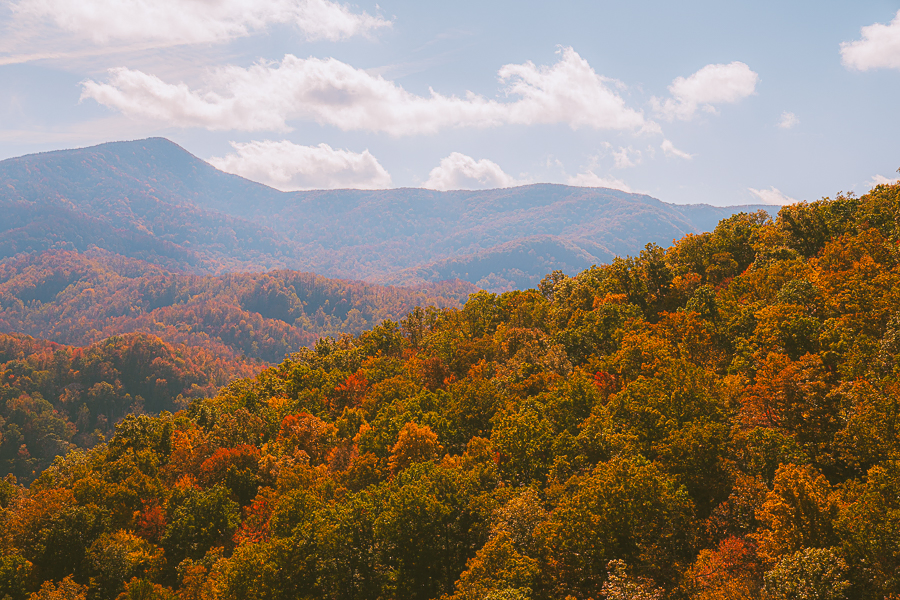
Now that you know what to do in the Smoky Mountains, you may still have burning questions about the national park. Here are a few FAQs to ensure you’re all clued up.
What Is the Most Visited Place in Smoky Mountains?
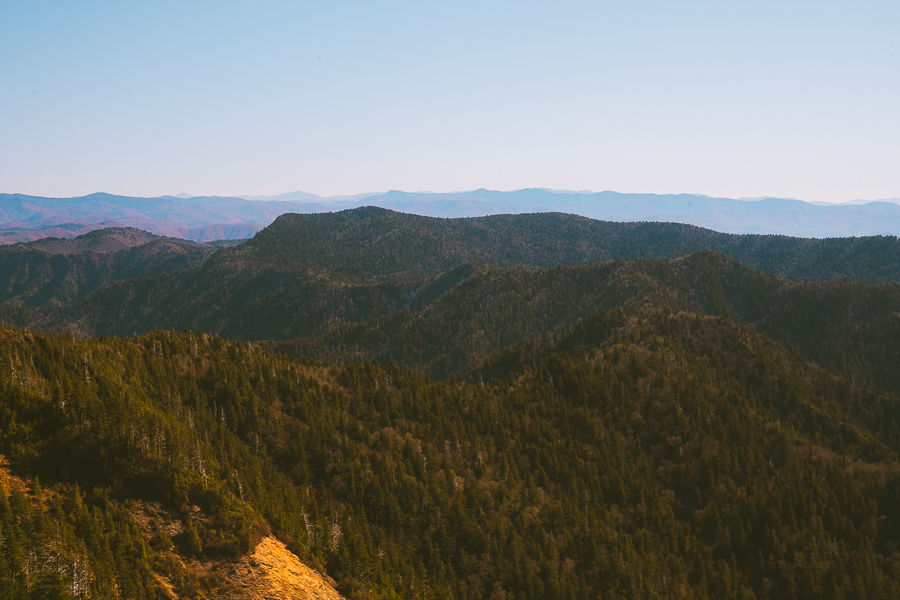
The most popular place to visit in the Great Smoky Mountains is Cades Cove. The area is a favorite amongst visitors as it embodies all that the national park has to offer. Witness the breathtaking scenery, from wildflowers in the spring to the incredible mountain views.
It’s also a great place to view wildlife and discover some of the park’s rich history.
What Is the Great Smoky Mountains Famous for?
The Great Smokies is famous for its incredibly stunning mountains and rich landscapes, which house a wide variety of plants, animals, and ancient treasures. It’s also one of the most-visited national parks in the United States and offers a unique glimpse into Southern Appalachian mountain culture.
Why Is it Called The Great Smokies?
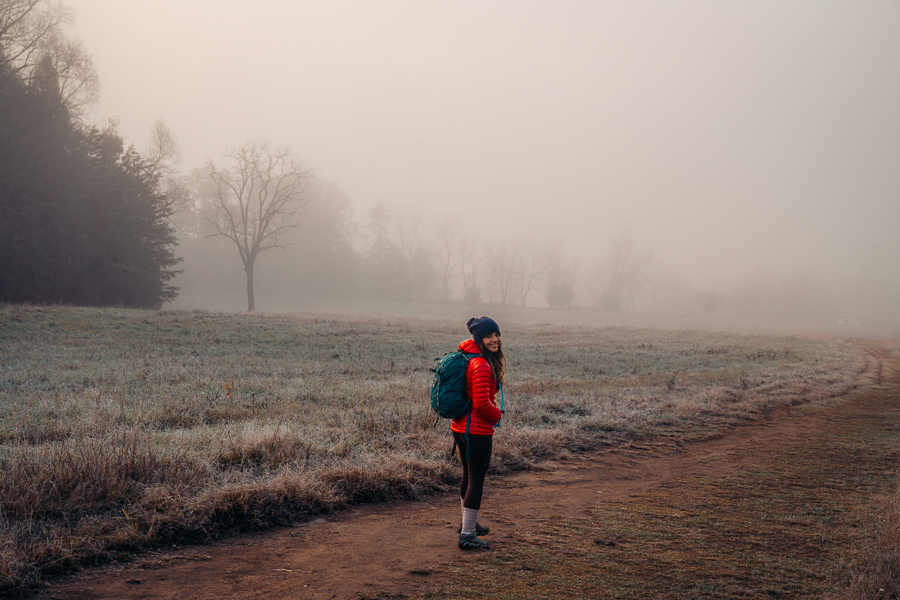
The national park is often referred to as the Great Smokies because of the ever-present blue fog that floats above the mountain peaks. The Cherokee people nicknamed the mountain “Shaconage”, which means “place of the blue smoke”.
So, when you’re visiting The Great Smoky Mountains, be sure to take a moment to admire the intriguing mist.
Summary on What to Do in Smoky Mountains
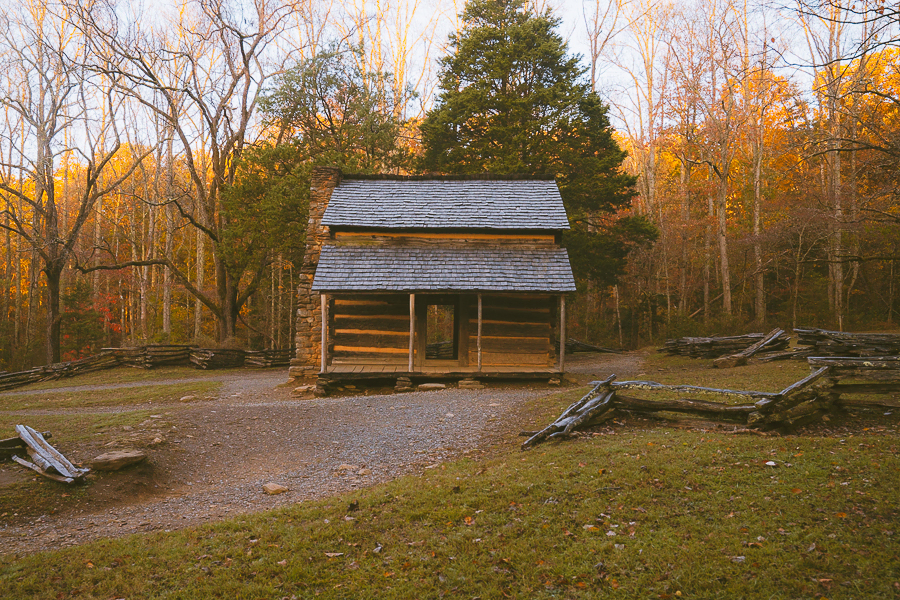
There you have it — a comprehensive guide on the top Smoky Mountain things to do. Whether you’re after a thrilling adventure or something more laid back, there’s something for everyone.
Whether you take on the challenging trail toward LeConte Lodge or enjoy a scenic drive along the famed Newfound Gap Road, the choice is yours. Simply put, adding the Great Smokies to your USA national parks road trip is an absolute must.

